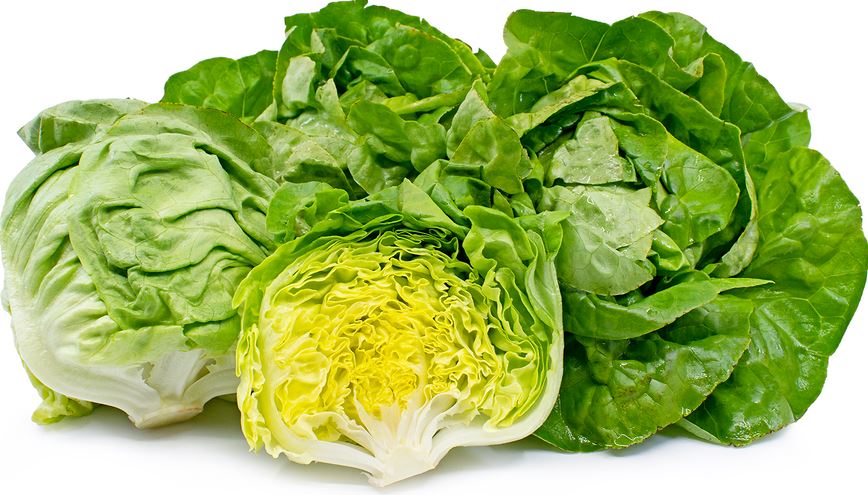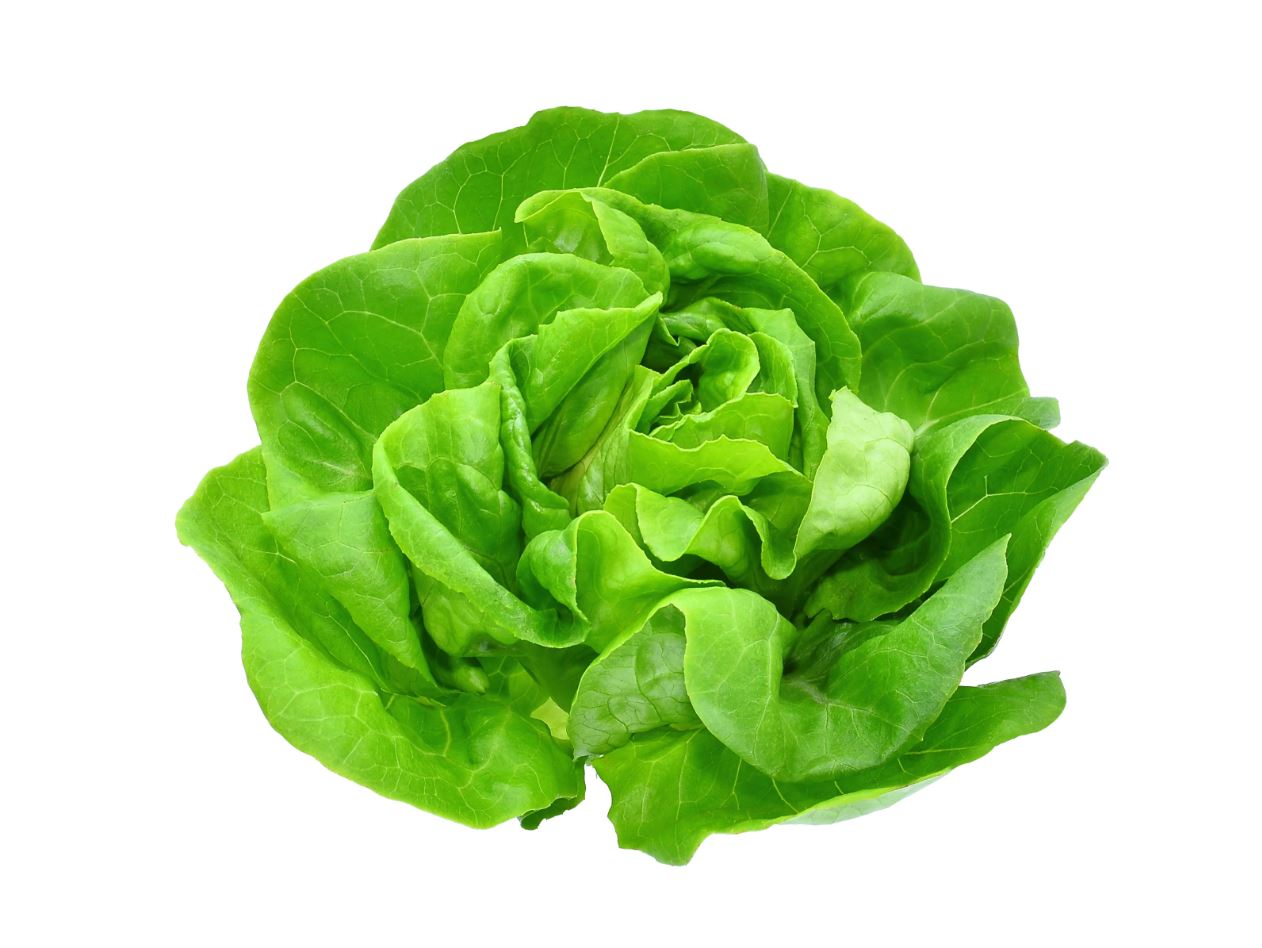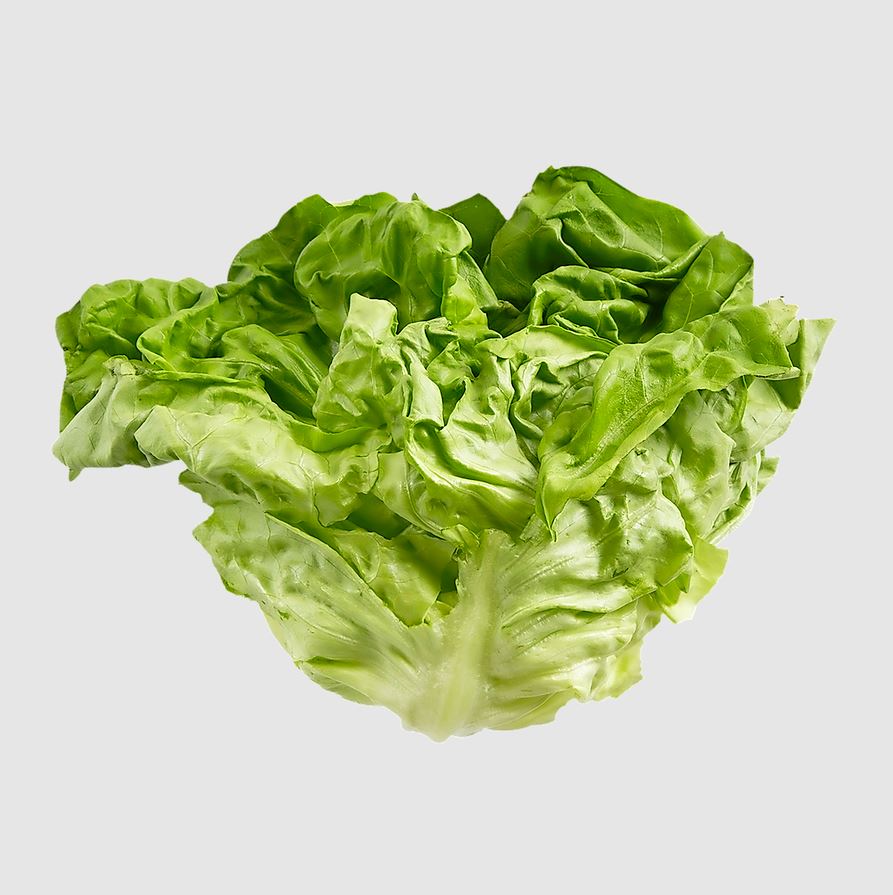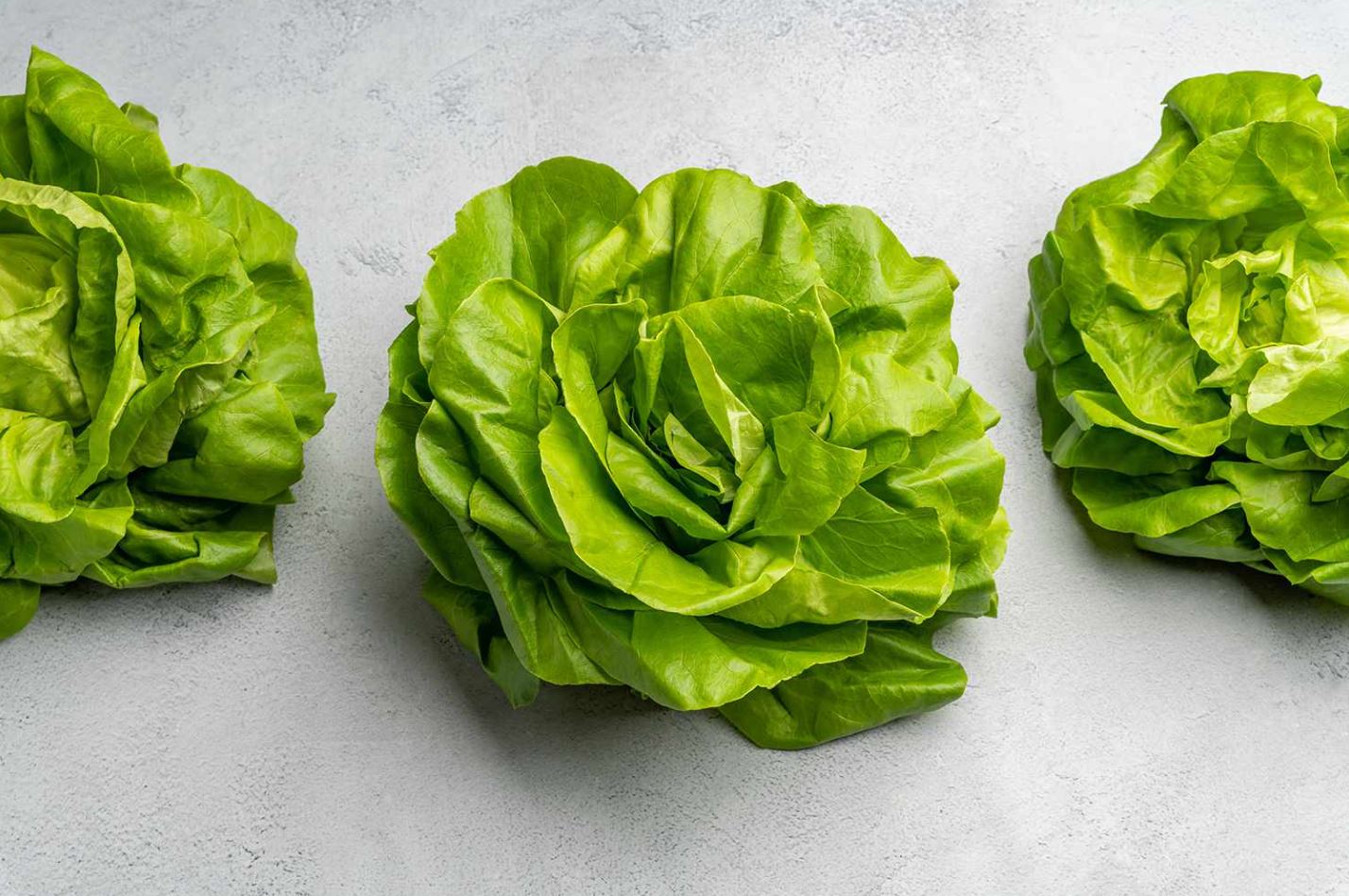Global Journey of Boston Lettuce From Kentucky Gardens
Boston lettuce, also widely known as Green Butter lettuce or Limestone lettuce, stands out in the world of leafy greens with its lush, buttery texture and visually appealing form. This variety, botanically classified under Lactuca sativa, belongs to the butterhead family of lettuces and is cherished for its soft, large leaves which resemble the petals of an open rose. Distinctive in its round, voluminous shape, Boston lettuce is characterized by an open heart surrounded by loosely arranged, wavy outer leaves that transition from dark to light green hues.
What sets Boston lettuce apart is not just its appearance, but also its culinary versatility and mild, sweet flavor that carries a subtle nutty undertone. This delectable combination of texture and taste has made it a favorite among chefs and home cooks alike. The tender, yet crisp leaves lend themselves perfectly to a variety of dishes. Whether it’s providing a delicate base for a salad, wrapping up a medley of savory fillings, or adding a layer of crispness to sandwiches, Boston lettuce performs wonderfully across both raw and cooked applications.
Its popularity in kitchens around the world can be attributed to its consistent quality and adaptability to different culinary styles. This lettuce type not only enriches the flavor palette of a dish but also enhances its aesthetic, making it as much a feast for the eyes as it is for the palate. As a result, Boston lettuce is often featured in culinary creations from high-end restaurants to everyday home-cooked meals, proving its place as a staple in the gastronomic world.
| Feature | Description | Culinary Uses |
|---|---|---|
| Appearance | Soft, large leaves that resemble the petals of an open rose, with a round, voluminous shape and an open heart surrounded by loosely arranged, wavy outer leaves transitioning from dark to light green. | N/A |
| Flavor and Texture | Mild, sweet flavor with a subtle nutty undertone and a lush, buttery texture. | Perfect for salads, wraps, and adding a layer of crispness to sandwiches. |
| Culinary Versatility | Highly versatile in both raw and cooked applications, valued for its tender yet crisp leaves. | Used in dishes ranging from high-end restaurant creations to everyday home-cooked meals. |
| Popularity and Adaptability | Consistent quality and adaptability to different culinary styles enhance the flavor palette and aesthetic of dishes. | Staple in gastronomic settings around the world. |
Contents
Description of Boston Lettuce
Boston lettuce, a distinguished member of the butterhead lettuce family, is celebrated for its unique structure and appealing aesthetics, which make it a favorite in culinary circles. Typically medium to large in size, this variety boasts a round shape, resembling a blooming flower. The leaves are characteristically loose and wavy, creating an inviting, open appearance that is not only beautiful but also functional, allowing dressings and vinaigrettes to cling effectively.

The outer leaves of Boston lettuce are broad and frilled at the edges, presenting a vibrant palette that shifts from deep green at the tips to a lighter, more delicate green as one moves inward. These soft, expansive leaves are thicker than those of other lettuce types, contributing to the lettuce’s robust texture. Moving towards the center, the leaves become more tightly bound and transition to a pale yellow-green hue, offering a contrast in both color and texture. This gradation not only adds visual depth but also hints at the lettuce’s subtle flavor nuances.
The arrangement of the leaves in Boston lettuce forms what is known as a rosette pattern. This pattern is not just visually striking but also indicative of the lettuce’s freshness and quality. Each leaf is wide and boasts a smooth, silky consistency, culminating in a uniform crunch when bitten into. This textural symphony, combined with the leaf’s buttery nature, makes Boston lettuce a versatile ingredient in a plethora of dishes.
| Feature | Description | Culinary Relevance |
|---|---|---|
| Appearance and Structure | Boston lettuce has a round, open shape with loose, wavy leaves resembling a blooming flower, and it forms a rosette pattern indicative of freshness. | The open structure allows dressings to cling effectively, enhancing flavor absorption. |
| Leaf Texture and Color Gradation | Outer leaves are broad and frilled, shifting from deep green at the tips to a pale yellow-green towards the center. Leaves are thicker and silkier compared to other types. | The thick and silky leaves provide a robust texture and a uniform crunch, suitable for a variety of dishes. |
| Culinary Versatility | Its buttery nature and textural symphony make Boston lettuce versatile in the kitchen, compatible with both light and robust flavors. | Ideal for salads, wraps, and as a base in decorative plating, adding aesthetic and textural appeal to dishes. |
Seasons and Availability
Boston lettuce is appreciated not only for its sensory qualities but also for its availability throughout the year, ensuring that enthusiasts can enjoy its freshness regardless of the season. This year-round availability is due to advanced agricultural practices and controlled growing environments that replicate its ideal growing conditions. However, like many vegetables, Boston lettuce has a peak season, which typically spans the summer through to the fall.
During these warmer months, Boston lettuce thrives naturally, reaching its optimal flavor and texture. The increased sunlight and ideal growing temperatures contribute to a more vibrant green color and enhance the natural sweetness of the leaves, making this the best time to consume Boston lettuce at its peak. This seasonality also supports local farming, as it is during this time that the lettuce is most commonly harvested and sold in farmers’ markets and stores, reducing the need for long-distance transportation and thus maintaining its freshness and nutritional value.
In conclusion, Boston lettuce’s distinct appearance characterized by its rosette pattern of silky, crunchy leaves, combined with its adaptability in availability across seasons, establishes it as a premium choice among lettuce varieties. Whether used in simple salads or elaborate culinary creations, its attributes make it a versatile and beloved ingredient in kitchens worldwide.
| Aspect | Description | Culinary Impact |
|---|---|---|
| Year-Round Availability | Boston lettuce is available throughout the year due to controlled growing environments that replicate its ideal conditions. | Ensures consistent availability for various culinary uses, making it a reliable choice for chefs and home cooks. |
| Peak Season | The peak season for Boston lettuce is during the summer through fall, where it thrives naturally and reaches optimal flavor and texture. | The best time to consume Boston lettuce for enhanced natural sweetness and vibrant green color. |
| Support for Local Farming | During its peak season, Boston lettuce is commonly harvested and sold locally, reducing long-distance transportation. | Supports local economies and ensures maximum freshness and nutritional value of the lettuce. |
Botanical and Commercial Aspects
Boston lettuce, botanically known as Lactuca sativa, belongs to the Asteraceae family, a diverse group that also includes daisies and sunflowers. This particular type of lettuce falls under the butterhead category, characterized by its soft leaves and loose head formation. Boston lettuce is also frequently referred to as Green Butter lettuce, emphasizing its tender texture, and Limestone lettuce, nodding to its historical cultivation successes in limestone-rich soils.
The adaptability of Boston lettuce to various soil conditions has been a key factor in its widespread cultivation. While it thrives particularly well in neutral to slightly alkaline soils abundant with limestone, it has also shown considerable resilience in less ideal soil types. This versatility makes it a preferred choice not only for large-scale commercial farming but also for home gardeners who may have varying soil conditions. The ability to flourish in diverse environments contributes to its robustness and the ease with which it can be grown, factors that enhance its popularity.
Commercial growers value Boston lettuce for several reasons. Its rapid growth cycle allows for quicker turnarounds between planting and harvesting, which is economically beneficial. Moreover, its popularity in the market ensures a steady demand. For home gardeners, Boston lettuce is equally cherished; it does not require as much space as some other vegetables and is relatively easy to maintain, making it an ideal choice for those with smaller gardens or even for container gardening.
| Aspect | Description | Impact |
|---|---|---|
| Botanical Classification | Boston lettuce is a member of the Asteraceae family, characterized by soft leaves and loose head formation under the butterhead category. | Highlights its unique botanical properties and family linkage to other diverse plants like daisies and sunflowers. |
| Adaptability to Soil | Thrives in neutral to slightly alkaline soils with limestone but also adaptable to various other soil conditions. | Enhances its cultivation versatility, making it suitable for both commercial farming and home gardening. |
| Commercial Farming Benefits | Known for its rapid growth cycle and popularity in the market, which ensures a steady demand. | Allows for efficient agricultural planning and reliable economic returns for farmers. |
| Home Gardening Appeal | Does not require much space and is relatively easy to maintain, making it ideal for small gardens and container gardening. | Makes Boston lettuce accessible to novice gardeners and those with limited space, promoting local and personal cultivation. |
Nutritional Profile
Boston lettuce is not only favored for its aesthetic and culinary attributes but also for its nutritional benefits. It is a good source of several vital nutrients, including calcium, magnesium, phosphorus, potassium, and vitamins A and K. Each of these plays a significant role in maintaining good health.

Calcium and phosphorus in Boston lettuce contribute to bone health, making bones stronger and more durable. Magnesium plays a crucial role in over 300 enzymatic reactions in the body, including those that generate energy and synthesize DNA. Potassium is essential for cardiovascular health, helping to regulate heart rate and blood pressure. Vitamin A is vital for vision, immune function, and skin health, while Vitamin K is crucial for blood clotting and bone metabolism.
The health benefits associated with these nutrients make Boston lettuce a valuable addition to any diet. The presence of vitamin A and magnesium can support the immune system, enhance eye health, and maintain energy levels. The calcium and vitamin K content are particularly beneficial in strengthening bones, which can be crucial for preventing osteoporosis. Furthermore, the low calorie and high water content of Boston lettuce make it an excellent choice for weight management and hydration.
In summary, the botanical classification of Boston lettuce as Lactuca sativa, its adaptability to different soil conditions, and its popularity among both commercial growers and home gardeners highlight its significance in agricultural practices. Additionally, its rich nutritional profile underscores its value in a healthy diet, providing essential minerals and vitamins while supporting overall health and wellness. These factors combined ensure that Boston lettuce remains a preferred lettuce variety in both commercial and residential gardening, as well as a nutritious component of meals across various cuisines.
| Aspect | Description | Health and Agricultural Impact |
|---|---|---|
| Nutritional Content | Boston lettuce is rich in calcium, magnesium, phosphorus, potassium, and vitamins A and K. | Supports bone health, cardiovascular health, energy production, immune function, and more. |
| Health Benefits | Provides essential nutrients for vision, skin health, blood clotting, and bone metabolism. Low in calories and high in water content. | Enhances overall health and wellness, ideal for weight management and hydration. |
| Agricultural Significance | Adaptable to various soil conditions and popular among commercial growers and home gardeners for its rapid growth and steady market demand. | Ensures a reliable source of this nutritious vegetable throughout the year, supporting sustainable farming practices. |
| Botanical and Commercial Appeal | Botanically classified as Lactuca sativa, known for its aesthetic appeal and culinary versatility. | Maintains high popularity in culinary applications, contributing to its staple status in diets worldwide. |
Culinary Uses
Boston lettuce is celebrated for its remarkable versatility in the kitchen, where it can be utilized in both raw and cooked forms. Its soft, buttery leaves and mild flavor make it a preferred choice for a myriad of culinary applications. In its raw state, Boston lettuce serves as an excellent base for salads. Its tender leaves pair beautifully with a variety of dressings, from light vinaigrettes to rich, creamy options. The gentle crispness adds a delightful texture without overpowering other ingredients, making it ideal for delicate salad creations.
Beyond salads, Boston lettuce is also commonly used in sandwiches and wraps. Its large, flexible leaves can be used as a healthier alternative to bread or tortillas, enveloping ingredients neatly and adding a crisp, hydrating crunch. Whether it’s wrapping a classic BLT, encasing a savory Asian-inspired filling, or simply adding a layer of texture to a vegetarian sandwich, Boston lettuce adapts seamlessly to various culinary styles.

The utility of Boston lettuce extends into cooked dishes as well. When lightly braised or added to soups, the leaves become slightly wilted, taking on a silky texture that complements richer, deeper flavors such as those found in slow-cooked meats or hearty vegetable stews. The lettuce’s ability to absorb flavors while contributing a subtle, vegetal note makes it an excellent addition to warm dishes, offering a balance of texture and taste.
Pairing suggestions for Boston lettuce are vast due to its mild and accommodating flavor profile. It pairs well with fruits like apples, pears, and citrus, which provide a sweet contrast to its subtle bitterness. In salads, combining Boston lettuce with creamy goat cheese, crispy bacon, or toasted nuts can create a satisfying mix of textures and flavors. Additionally, its compatibility with a range of dressings—from tangy balsamic to sweet honey-mustard—allows for creative culinary experiments.
| Culinary Use | Description | Pairing Suggestions |
|---|---|---|
| Raw Applications | Serves as a base for salads with its tender leaves and gentle crispness. Ideal for delicate salad creations. | Works well with light vinaigrettes, rich creamy dressings, and pairs beautifully with fruits like apples and pears. |
| Sandwiches and Wraps | Large, flexible leaves make a healthy alternative to bread or tortillas, adding a crisp, hydrating crunch. | Excellent in a classic BLT, savory Asian wraps, or as a fresh addition to vegetarian sandwiches. |
| Cooked Dishes | When braised or added to soups, it wilts slightly and takes on a silky texture that absorbs and complements richer flavors. | Enhances slow-cooked meats or hearty vegetable stews with its subtle, vegetal notes. |
| Flavor Compatibility | Its mild and accommodating flavor profile allows it to blend seamlessly into a variety of dishes. | Matches well with creamy goat cheese, crispy bacon, toasted nuts, and diverse dressings like balsamic or honey-mustard. |
Ethnic/Cultural Significance
Boston lettuce, also known as Bibb lettuce in some regions, carries a notable history, particularly in the United States. Its story begins with John Bibb, an attorney in Frankfort, Kentucky, who first cultivated a special variety of lettuce in the early 19th century. This variety, initially grown in the alkaline soils of Bibb’s own garden, was later named after him as Bibb lettuce, a close relative of today’s Boston lettuce.
John Bibb’s initial cultivation efforts were modest, aimed primarily at improving the quality and variety of his personal vegetable garden. However, as he began sharing his lettuce with neighbors and friends, its reputation grew. By the mid-1800s, Bibb lettuce was highly sought after in the region, known for its superior taste and texture compared to other lettuce types available at the time. This personal project eventually led to widespread cultivation, spreading beyond Kentucky as more gardeners and farmers recognized the lettuce’s virtues.
The spread of Bibb, and by extension Boston lettuce, mirrors the broader trends in agricultural and culinary practices of the period. As America’s agricultural landscape expanded, so did the variety of crops being cultivated. Boston lettuce exemplifies how a single, well-adapted variety can influence culinary habits and preferences across a nation. Today, it continues to be a staple in kitchens and restaurants, cherished not only for its historical significance but also for its culinary versatility and pleasing aesthetics.
In conclusion, the culinary applications of Boston lettuce are diverse, spanning raw and cooked dishes with ease. Its ability to pair with a broad spectrum of flavors makes it a valuable ingredient in global cuisines. Meanwhile, its cultural significance, highlighted by the story of John Bibb, adds a rich historical layer to its appreciation, celebrating the deep-rooted connections between agriculture, community, and cuisine.
| Historical Aspect | Description | Cultural Impact |
|---|---|---|
| Origins and Naming | Originally cultivated by John Bibb in early 19th century Kentucky. Named Bibb lettuce after him, a close relative of Boston lettuce. | Shows the connection between individual innovation and widespread culinary adoption. |
| Spread and Popularity | Began as a personal garden project and grew in popularity through community sharing, leading to widespread cultivation. | Illustrates the role of community and social networks in spreading agricultural innovation. |
| Agricultural Trends | Mirrors broader agricultural expansion in America, showcasing how adaptable crop varieties can influence national culinary habits. | Highlights Boston lettuce’s role in the evolution of American agriculture and cuisine. |
| Modern Culinary Role | Continues to be a staple in both kitchens and restaurants, valued for its versatility and pleasing aesthetics. | Emphasizes its enduring appeal and relevance in contemporary culinary practices worldwide. |
Geographical Distribution
Boston lettuce, which has its historical roots deeply planted in Frankfort, Kentucky, owes its early cultivation to John Bibb, an innovator in horticulture during the early 19th century. Initially a regional specialty, this variety of lettuce has since traversed global boundaries and found a place in markets and gardens worldwide. Its journey from a small garden in Kentucky to international acclaim is a testament to its adaptability and appeal.
The geographical spread of Boston lettuce is extensive. In the United States, where it originated, it has become a staple in supermarkets, farmers’ markets, and organic food stores, flourishing in both outdoor farms and modern hydroponic systems. Its cultivation has adapted to various climatic regions across the country, from the cooler northern states to the warmer southern climates, proving its versatility.

Beyond the United States, Boston lettuce is now cultivated and sold in diverse regions around the world. In Europe, it is favored for its tender leaves and is commonly found in the Mediterranean diet, where fresh, crisp vegetables are a dietary mainstay. Asia has incorporated Boston lettuce into both traditional and modern culinary practices, using it in everything from classic salads to wraps and garnishes for hot dishes. In South America and Australia, its cultivation has been successfully integrated into local agriculture, benefiting from the varied climates that range from temperate to tropical across these continents.
The widespread availability of Boston lettuce today is not just a reflection of its adaptability to different soils and climates but also its growing popularity among consumers who value both its flavor and nutritional profile.
| Geographical Aspect | Description | Impact on Cultivation and Consumption |
|---|---|---|
| Origins and Early Cultivation | Originated from John Bibb’s garden in Kentucky in the early 19th century, initially a regional specialty. | Illustrates the historical significance and initial cultivation success that laid the foundation for global spread. |
| Domestic Spread in the U.S. | Widely adopted across various climatic regions in the U.S., found in supermarkets, farmers’ markets, and grown in hydroponic systems. | Shows adaptability to diverse climates and cultivation methods, enhancing its presence in the U.S. market. |
| International Cultivation | Now grown and consumed in Europe, Asia, South America, and Australia, incorporated into a variety of dietary habits and culinary practices. | Reflects its versatility and ability to integrate into different culinary cultures and agricultural environments globally. |
| Consumer Popularity | Valued for its flavor and nutritional profile, contributing to its adoption worldwide. | Enhances its global market demand, highlighting consumer appreciation for its quality and health benefits. |
Boston lettuce, with its lush, buttery leaves and mild, sweet flavor, has been covered extensively from various angles—its unique physical characteristics, nutritional benefits, versatile culinary uses, cultural significance, and broad geographical distribution. This comprehensive overview underscores why Boston lettuce is cherished globally not only as a dietary staple but also as a key ingredient in a myriad of culinary creations.
From its historical origins in Frankfort, Kentucky, to its presence on dinner plates across the globe, Boston lettuce has demonstrated remarkable adaptability and enduring appeal. Its ability to thrive in diverse environments, coupled with its pleasing texture and flavor, has made it a favorite among both commercial growers and home gardeners. Its nutritional content—rich in vitamins and minerals—adds to its value, making it a healthy choice for a balanced diet.
As we have explored, the culinary potential of Boston lettuce is vast. It seamlessly transitions from raw to cooked forms, fitting perfectly into salads, wraps, sandwiches, and even cooked dishes like soups and braised meals. Its compatibility with a wide range of ingredients—from fruits and cheeses to meats and dressings—allows for endless creativity in the kitchen.
Readers are encouraged to explore the culinary possibilities that Boston lettuce offers. Experiment with it in your salads, try it as a wrap for your next lunch, or incorporate it into a warm, comforting soup. Its versatility ensures that it can enhance any meal, providing both nutritional benefits and delicious flavors. Discover the many ways Boston lettuce can enrich your cooking, reflecting its rich history and global journey from a small garden in Kentucky to kitchens around the world.
Lettuce -